Blogs
In order to understand David Evansstory we must first know about a small town called Conchillas.
Conchillas is a small, quiet town in Colonia (south-west of Uruguay). It takes 3 hours to arrive there from Montevideo by coach. As soon as you get there you realize that the houses and buildings remain as they were more than a hundred years ago.
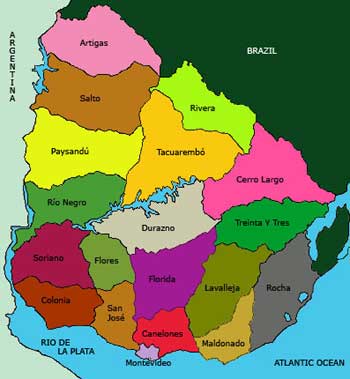
Conchillas was founded in 1887 in order to get sand, stone and lime so as to build the Port of Buenos Aires (Argentina). Nowadays it has a population of 500 people but in the 1880s it had a population of 2000, most of them were workers of a British company called C.H Walker& Co.Ltd.
The workers came from different countries: Italy, Spain, Greece, Turkey, Scotland, Germany and Belgium among others. Their job was to take stone and sand from the quarries.
As the conditions in which the workers lived were not good, and as a result many got ill, the owner of the company decided to build houses for the workers to live in.
Those houses can be seen nowadays. They are made of stone and mud and their walls are painted yellow while their detached zinc roofs, wooden doors and window frames are painted red.
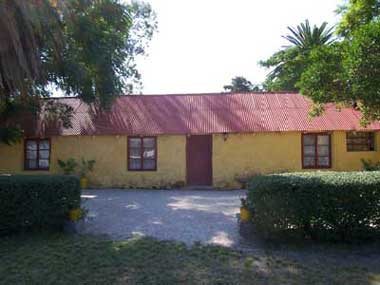
DAVID EVANS
Who was David Evans?
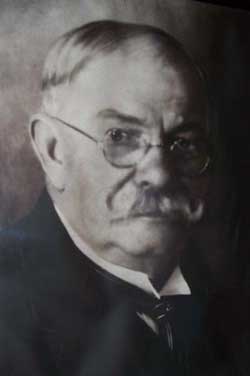
David Evans was a Welshman who was born in 1861. He was the only survivor of a shipwreck that took place in the coast of Conchillas in 1888. The ship was called Sophia and David Evans was the cook.
In order to earn money he started selling bread to the people who worked in the quarries. Then he opened a shop where he sold sweets, tobacco and other things. Years later he joined Charles Hay Walker who was the owner of a company and set up the most important General Store of that time. It was called Casa Evans & Co. People could buy almost everything there: furniture, shoes, clothes, food, cars and agricultural machines.
Not only did Casa Evans & Co sell the items mentioned above but it also bought the crops from all the farmers who lived nearby and exported them to a company in Buenos Aires, Argentina.
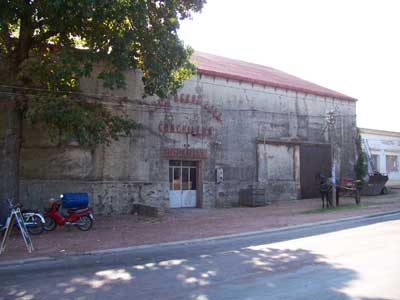
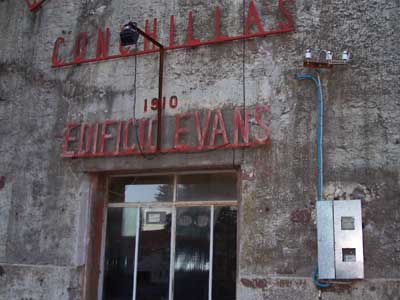
Moreover the store had its own currency. It was known as the towns currency because it was used by everyone.
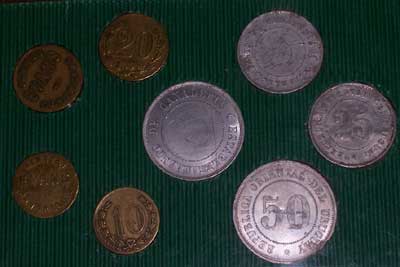
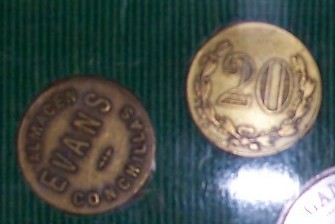
Conchillas main street is named after David Evans.
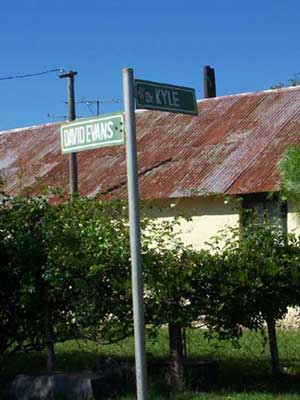
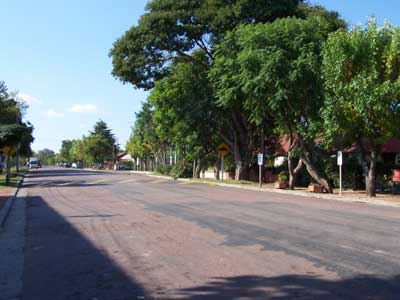
David Evans never got married but he took care of some children after their parents died. One of his sisters emigrated to the United States while other relatives came from Wales to Uruguay and got married here.
David Evans died on 27th August 1938 at the age of 77. He was buried in the cementery of Conchillas.
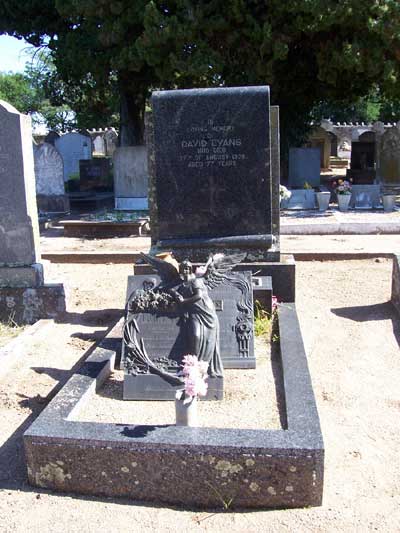
Visiting Conchillas.
If you come to Uruguay and have the chance to visit Conchillas you can contact Mario Leal and his wife who will kindly invite you to visit their house and tell you about the history of the town.
The following pictures were taken in Mario Leals house.
The house is called Remember and was turned into a museum some years ago.
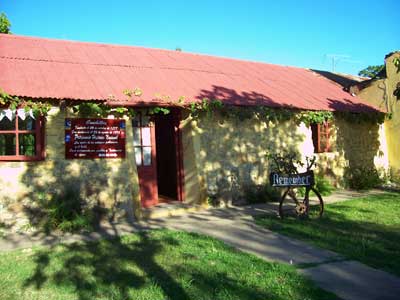
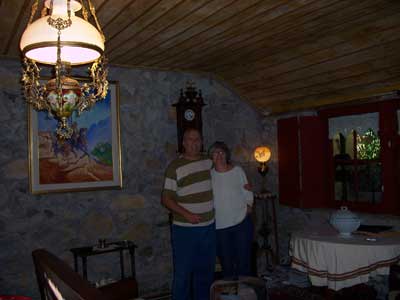
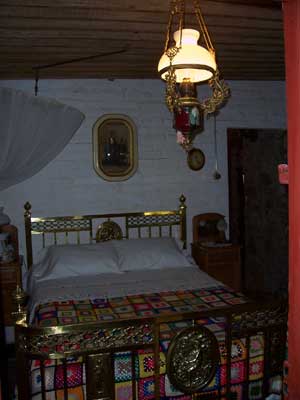
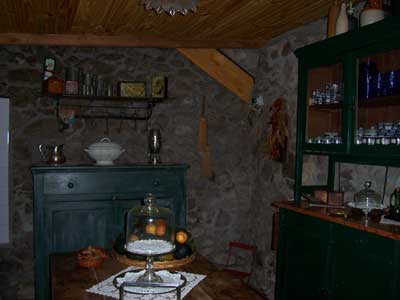
I would like to thank Mario Leal for showing me Conchillas and telling me about it.
Hope you liked this blog and you are all very welcome to Uruguay!
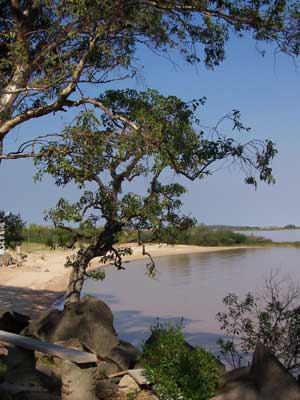
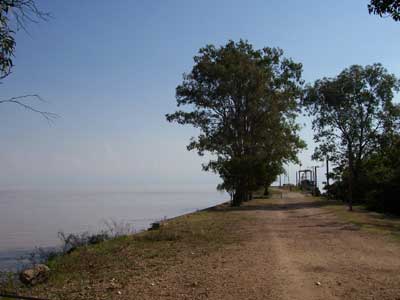
Map of Uruguay - www.uruguayuruguay.com/mapa-de-uruguay-y-band ...
Pictures and text: Virginia Sosa


Siobhan at the National Folk Festival, Canberra
Our newest member Wayne Yendle has something important to say to us all. Please visit his website to discover why:-
The Man

Peter has been invited back to America in May 2009. He will carry out a a series of poetry readings and literary talks in New York, where he will be hosted by Professor Sultan Catto of City University of New York, The Graduate Center, and his American publisher Stanley H. Barkan.
Whilst in New York he will also participate in a new project with Stanley, who is planning to produce a dvd based around the popular 'Walking Guide of Dylan Thomas's Greenwich Village' , written by Peter and Aeronwy Thomas, Dylan's daughter, which was commissioned by Catrin Brace of the Wales International Center, New York in May 2008. Peter will produce a narrative contribution and Swansea singer-songwriter Terry Clarke, a frequent participant at The Seventh Quarry/Cross-Cultural Communications Visiting Poets Events, will sing original songs and compose the incidental music.
Peter Thabit Jones is also the judge of the 'Left Coast Eisteddfod Poetry Competition'.
,,,
The Interview
Americymru: Where else in the US are you visiting this year?
Peter: Firstly, I have literally just returned from the World Conference in Boulder, Colorado. I was visiting poet for ten days. I had a truly wonderful time, spent with a variety of leading creative people from around the world (a filmmaker, cowboy singer-songwriter, jazz musicians, politicians, Irish storyteller, scientists, journalists etc.) on stimulating debating panels and I also read my poems whilst there.
In mid-May I go to New York, as visiting poet, sponsored by Professor Sultan Catto of CUNY, The Graduate Center, New York, and Stanley H. Barkan, my New York publisher (Cross-Cultural Communications). I will be giving readings and talks, including a major event at the Mid-Manhattan Library, whilst there. I will also be involved in the making of a celebration dvd built around the 'Dylan Thomas Guide to Greenwich Village', which I wrote with Aeronwy, his daughter, for the Wales International Centre, New York. The dvd is being produced by my New York publisher, who came up with the idea, and will feature original songs about Dylan by singer-songwriter Terry Clarke, and a group of Cross-Cultural Communications- published poets from across America.
Americymru: Do you set out to write a collection for publication, or do you simply write and eventually gather up the ones that seem to go together?
Peter: I tend to write poems in batches and eventually shape them into a collection, Usually, my final choice is powered by poems that seem to fit into certain themes, such as childhood, people etc. However, my last book, The Lizard Catchers, was a kind of Selected Poems for the American market and it comprises poems taken from my books published in Britain.
Americymru: Is poetry a priestly calling for all poets, or just a few? Im thinking of The Priest-Poet R.S. Thomas.
Peter: I think it is for the true poet. R.S. said, 'Poetry is religion, religion is poetry' and I think he was echoing Wordsworth's 'priest-like task'. Poetry for me is a vocation, like the priesthood, and I certainly believe a poet can have - to quote St John of the Cross - 'a dark night of the soul', when he doubts the importance of poetry, in the same way some priests go through moments of doubt about their faith. Alternatively, a true poet can experience visions of eternity. I am, in fact, a real admirer of R.S. Thomas's work.
Americymru: Are poets born or made?
Peter: Well, John Clare, echoing Horace I believe, said 'A poet is born not made'. However, we have Edward Thomas, the First World War poet ( he's of Welsh descent and gave his three children Welsh names), who started writing poems around the age of 37 years at the suggestion of the American poet Robert Frost. Thomas had written quality prose for decades and Frost pointed out that some of the passages were ideal for turning into poems. I have taught potential poets for sixteen years at the Adult Education Department at Swansea University. I think the hardest thing is to develop an individual vision and poetic voice. Maybe one is born with those two vital things.
Americymru: When you teach writing, whats the most important thing you want your students to apprehend and incorporate in their writing efforts?
Peter: I try to get over a real sense of the importance of craft. Vernon Watkins, Dylan Thomas's much under-rated friend, said, 'Cold craftsmanship is the best container of fire': an important statement. It's craft that takes over from that initial and exciting spurt of inspiration. I cover metre and poetic devices and try to get over the importance of the musical aspect of poetry, 'the colour of saying', to quote Dylan Thomas.
Americymru: Post-modern cool poets write in free verse. Why do you choose rhyme & metre? Did you choose them, or did they choose you? Why do you like the traditional styles so well?
Peter: It's possible we chose each other. I think it is because I believe passionately in the music of poetry, the sound as much as the sense. It's also, of course, a Welsh thing: Dylan, the Welsh-language bardic poets. I was lucky in the 1980s when I met the Welsh-language poet Alan Llwyd, the cynghanedd master, who taught me quite a bit about cynghanedd devices. He won the Chair and the Crown twice at Royal National Eisteddfods. I also think the rubber band of poetry can be stretched to take in all kinds of poems. For me, though, if I write free verse I try to sound-texture it with poetic devices. When I toured America last year (and at Colorado a few weeks ago) it was something people pointed out time and time again: the musical quality of my poems, which for me was rewarding when it was noted.
I like the traditional styles because I see them as an adventure rather than a strait-jacket.
Americymru: Why do you think landscape is such an important witness and mnemonic device for you? How do you think it holds memory the way youve depicted it Im thinking of Kilvey Hill and the Lions Head here?
Peter: My first memory is of landscape. I recall, as a toddler, looking through the open kitchen door of my Grandmother's home (she and my Grandmother raised me) and seeing this huge, sulking shape dominating every thing: Kilvey Hill. As soon as I was old enough to explore it, I explored every corner of it. For me, Kilvey and the landscape of Eastside Swansea (Dylan's ugly side of his 'ugly, lovely town' - luckily for me he did not write about it!) confirms a pantheistic belief in me that we are connected to nature (The force that through the green fuse drives the flower). Kilvey Hill is also, for me, the touchstone to that reality that down the years has changed into a memories: my first bonfire night, first gang of boys, first camping out experience, first love etc. I have just finished, after ten years of working on it, a verse drama, The Boy and the Lion's Head, based on my Lion's Head poem and my grandfather's experiences as a soldier on the Somme. It is about the impact of a grandfather's stories and a particular landscape (the industry-spoilt Eastside Swansea) on a boy's imagination.
I am very excited by it and two American friends have been very, very enthusiastic about it.
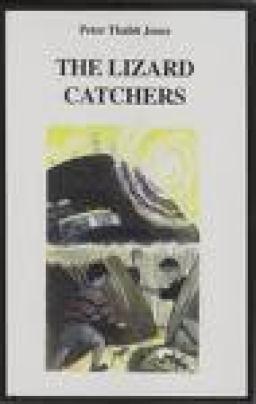
Peter: From adolescence (My Grandfather's Razor) to poems written recently (Night, The Green Bird), whilst in my mid-fifties.
Americymru: How long did it take you to find your voice as a poet?
Peter: A long time. The turning point for me was a deep personal grief in my life, the death of my second son, Mathew. I did not write for a long time. When poetry came back to me I knew I could not fall back on someone else's voice or experiences. To be honest, though, I think it is only in the last twelve years that I have really started to understand and use, as I would like to, my own voice. My dear friend and mentor, Vince Clemente, a New York poet and critic (an expert on Walt Whitman) has helped me immensely since we first started corresponding in 1997 and showing each other poems-in-progress.
Americymru: Why do you think it is that you can see so deeply into the world? Do you think this is a native ability or did you have to cultivate it?
Peter: Even as a small boy I was curious about the reality of things, the depth of experiences. Also, my only memories of my grandfather are of him, seriously unwell, in a bed in our parlour. I think such nearness to death at such a young age makes one really focus on life, the living things. The part of the landscape of Wales where I was born and raised offered so much to focus on, Kilvey Hill, the nearby (then) busy docks, the beach, and the (then) seaside town of Swansea. As I got older I read famous poets, such as Wordsworth, Tennyson, R.S., Ted Hughes, and I soon realised I was not alone in wanting, almost needing, to see 'shootes of everlastingness' beyond the curtain of reality. So I suppose I 'cultivated' my inborn strengths. They say the Welsh are a curious people and I certainly have that trait.
Americymru: What is it about the little things and passing vignettes of life that catch your attention?
Peter: I think the little things are all revelations of the big things, thus when observing soemthing like a frog or a lizard one is observing an aspect of creation, a thing that is so vital and part of the larger pattern that none of us really understand. Edward Thomas said, 'I cannot bite the day to the core'. In each poem I write I try to get closer to the core of what is reality for me, be it the little things or the big things such as grief and loss.
Americymru: When you write, do you write a poem and then pare it down to its bones, or, do the bones come first?
Peter: For me the bones come first, a word, a phrase, a line, or a rhythm, usually initiated by an observation, an image, or a thought. Then once I have the tail of a poem I start thinking of its body. Nowadays, within a few lines I know if it will be formal or informal. If it is formal, all my energies go into shaping it into its particular mould, a sestina or whatever. If it is informal, I apply the same dedication. Eventually after many drafts, a poem often then needs cutting back because of too many words, lines or ideas. R.S. indicated that the poem in the mind is never the one on the page, and there is so much truth in that comment. The actual writing of a poem for me is the best thing about being a poet: publication, if possible, is the cherry on the cake.
Americymru: You have such an elegant and clean style; how did you develop it?
Peter: Thank you,. I think from reading and studying the great poets, especially the Welsh ones (R.S., Dylan T., Vernon Watkins and Merthyr-born Leslie Norris) and the Irish ones (Yeats and Heaney). I also believe a poem should last for more than one reading, that a reader should be able to enter a poem again and again and get some thing from it. So, again, I think if I have such a style it is connected with my commitment to craft.
Americymru: You paint such impressionistic word-pictures the way you hyper-focus on little details and hang the whole rhythm of the poem on them. Can you remember how old you were when you first encountered Monet, and what the process was for you to acquire that same technique he had in paints, for yourself with words?
Peter: I first encountered a painting by Monet in a library book (I joined Swansea Central Library when I was sixteen, mainly to take out poetry books) and the real thing on a school trip to the National Museum in Cardiff. Again, I think by carefully focusing on the little things, and by trying to choose the right words to convey, indeed replicate, a visual experience, you can present a larger picture. Robert Frost (I'm paraphrasing) said that one first had to be provincial to be universal. Also, in the Welsh-language they talk of a poet 'being a master of the exact word', the ability to choose the right and only word. It was a single word rainbow in the Welsh poet W.H. Davies's The Kingfisher that started me writing at the age of eleven. My teacher at Danygraig Boys' School, a superb teacher called Mr. James, read out the poem to the class. The opening line did it for me, 'It was the rainbow gave thee birth'. I could not believe that one single word could convey so much. It lit up in my mind and kick-started my love of language, my love of the wonder and magic of words. Seamus Heaney said, 'Words are doors themselves' and I love that possibility, that way of using them.
Americymru: In Psalm for the Twentieth Century you talk about what a sacrilege were committing on everything that is sacred. Is there something about that desecration you see, that makes the planet more blessed? Can environmental degradation somehow bestow blessings? One line really stood out Blessed is the child that the city drives wild. Do you think the cities bring out the native wildness in children, or do they shatter it? Do you think that the urban wilderness can give us mad and prophetic poets like Lailoken and Taliesin?
Peter: I think as one gets older, certainly for me, the world becomes more incredible, my part in it so insignificant; and, despite what we are doing to it, it is still full of wonders and I do try to see the loveliness amongst ugliness, and the ugliness amongst the loveliness. So I do see the blessings. I think in that line about the child I was thinking of both things: that the packed, impersonal city can impact dreadfully on a child's physical and mental being, and, of course, it can push them into using their innate survival equipment in order to survive.
Well, poets like Allen Ginsberg certainly faced many of the obvious problems of modern life in a very individual and impressive way. I think good poets, whether country-based or city-based, attempt as best as they can to respond to their immediate surroundings, and, yes, many are prophetic in their own way. As Wilfred Owen said, 'All a poet can do today is warn.
Americymru: How did you get the job working with special needs children, why did you take it, and did it change or enhance the way you see the world?
Peter: I was a freelance writer and I was doing a lot of work in schools, colleges etc. The opportunity came up to learn sign language on a college course (I used to ride a motorbike - my first one at the age of thirty something - from Swansea to Barry College, very scary and exciting). Then from that came the opportunity to do work with special needs children. I took it because I wanted to experience a world beyond my world, a world unknown to so many of us. It changed me in that it changed my perceptions of their world, their daily problems, their incredible bravery, and, at times, sheer tenacity. I'm sure, as with all ultimately rewarding and humbling experiences, it contributed to the way I see the world.
Americymru: The themes in The Lizard Catchers childhood and its traumas, the relationships of children to adults and vice versa, the loss and grief they inflict on each other, illness, death, mortality, urban ruin and the omnipresence of Nature even in the pit of industrialization make this a very emotional collection. If our humanity is the connecting thread, then do you really think its possible to re-arrange the beads on the rosary as it were, to get them all to make sense?
Peter: I certainly believe our humanity is the connecting thread. We all share these things, childhood, relationships, grief, the environmental demise of our world etc. We are all, ultimately, very fragile. One of the panels at the World Conference in Boulder, Colorado, was titled Death: Go Gentle into that Good Night, and one of my contributions was that if we all actually considered our own mortality more often then maybe we would be nicer to each other.
These things, though, don't occur in sequence, For example, some experience death very early in life, others very late in life. So it is often difficult to get them to make sense, in a logical, a rosary-bead way. Again, getting older places some of them in more of a context and a kind of acceptance that starts to make sense.
Americymru: Why do you think grief makes all the little things stand out so starkly? Why, or how, does it cause the hyper-focusing that comes out in your poems?
Peter: Because it is such a cliff-edge thing, a paring down to the real basics, the real essence of what we are: fragile and naked. You see this in the big tragedies, world wars, 9/11 etc. People suddenly focus on what really matters, the little things, and they focus more deeply. Many soldiers in the First and Second Worlds Wars suddenly started writing poems, men who had never written one in their lives. When we find ourselves in the the cold corner of grief, the cul-de-sac of shock, the little things seem to light up, be of more importance: a child's smile, a friend's hug etc. The playwright Dennis Potter said in one of his last interviews, before dying of cancer, that the blossoms in his garden seemed to be more bright than they ever were. In my poems, the little things are a kind of reassurance, a kind of confirmation of a small pattern in the bigger pattern of it all.
Americymru: Is childhood really that terrifying an experience for a majority of people, do you think? Im thinking of the Boy and the Lions Head and The Protest.
Peter: Probably not. But I do think children experience fears of what is not understood, such as the boy in the poem about the strange man and the Lion's Head. The Protest is one way of me looking at my not having my real parents as a child. It's not, of course, as emotional or as powerful as John Lennon's Mother.
Americymru: So, Seamus Heaney has been known to praise Eminems rap-poetry. Any thoughts on that, on rap as a poetic form born of urban ruin, and on where that might fit into a 1000 year old poetic tradition?
Peter: I can understand Seamus Heaney's praise for Eminem, certainly the musical quality. I have always liked Bob Dylan's Subterranean Homesick Blues, probably the first 'rap song'. At the World Affair Conference I shared the stage several times with Lynne Johnson, a young female Hip Hop poet from New York, who was really great, engaging, musical and exciting. Rap seems the ideal response of young people to urban ruin and I'm sure the form will snuggle into its rightful place in poetic tradition.
Americymru: Wildness and Nature always seems to overcome our best efforts to cage, encrust, or otherwise tame it. Why do you think so many people, and the modern world as a whole, think they can best it? What is it about people, do you think, that they just have to keep trying at that?
Peter: Well, man has to dominate, not just nature but each other. Man strives to be godlike and getting nature/wildness under his thumb maybe confirms that side of his ego. Maybe there is an element of envy too, the freedom of an eagle in the sky, the sheer force of a river, the dignity of a mountain. Modern man has also lost his respectful relationship with nature. Pre-literate people understood and appreciated the preciousness of the world they inhabited, that they were mere brief visitors to the Earth, protectors of it for the generations to come.
Americymru: Do you think mankind can save ourselves from our own bloodthirsty destructive tendencies, and if so, how do you think were going to be able to do it?
Peter: I hope so but one feels so pessimistic for so much of the time. Materialism seems to gnaw away at our sanity, fool us into not wanting to see what damage we are actually doing. We have to try to do something for future generations, our grandchildren and their children and so on. To achieve changes, we have to consider this whole business of materialism, this 'fast food' approach to everything, this 'I want, so I must have' mentality. Maybe mankind will arrive at a cliff-edge that cannot be ignored, a natural or man-made catastrophe that will stop everything in its tracks: and then force a real change in things.
Americymru: Are we going to destroy ourselves do you think, or will Nature beat us to the punch?
Peter: A big question again. I hope no-one is mad enough to set off the first bonfire of vanity that will mean our mutual annhilation. Our daily destruction of the actual planet is probably a bigger threat and one we cannot ignore forever. Nature, of course, can happily get on without us.
Interview by Kathleen O'Brien Blair
